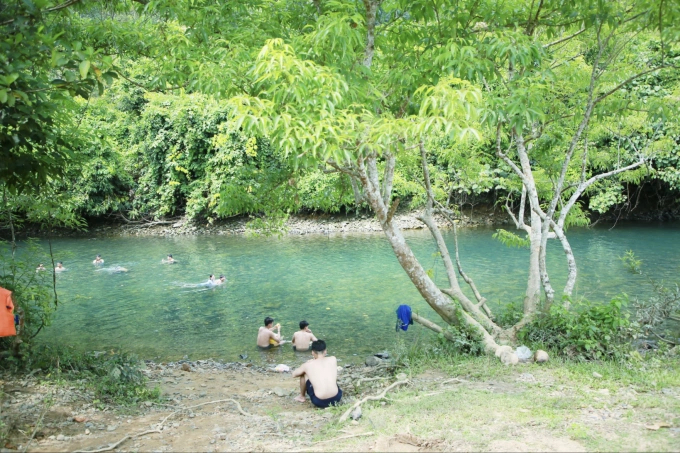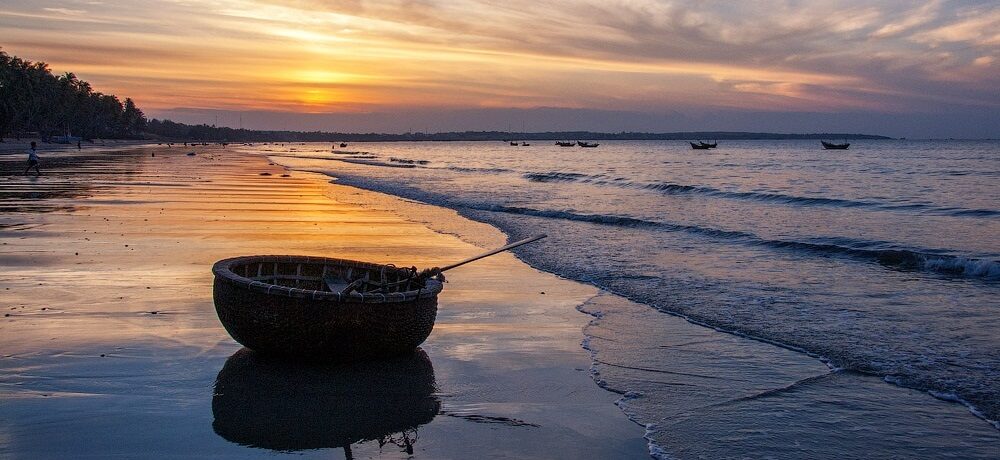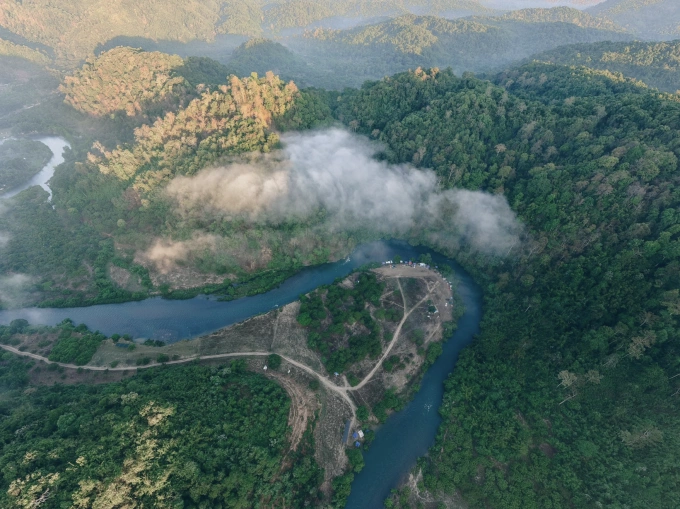Binh Thuan’s pristine La Ngau Stream with cool, clear water is an attractive camping spot, but the terrain is complex, so visitors need to follow the dam discharge schedule to ensure safety.
La Ngau Stream is located upstream of La Nga River, nearly 200 km from Ho Chi Minh City, surrounded by Tanh Linh forest. This place has a pristine, fresh landscape. Visitors here mainly participate in camping activities around the stream. There are two forms: setting up tents at spontaneous sites or hiring on-site services. This area has no electricity grid, almost no phone and Internet connection.

During the summer and holidays, La Ngau stream welcomes hundreds of visitors every day to camp and bathe in the stream. However, the terrain of the forest and stream is dangerous and has many potential risks. Visitors need to wear life jackets when entering the water and have a guide familiar with the area accompany them to ensure safety.

Notes for safe camping at La Ngau stream were suggested by Nguyen Thanh Tuan, who just experienced it on April 30, and Mr. Xuan Dinh, owner of Vuon Dieu Camp.
Check the weather before your trip

The rainy season, from June to October, causes La Ngau stream’s water level to rise, especially after heavy rains upstream. Visitors should check the weather forecast and avoid camping during rain or heavy rain warnings in Tanh Linh and nearby areas.
Choose a campsite with a manager
Most La Ngau campsites now have managers, including self-sufficient areas like the cashew garden. Fees cover daily trash cleanup, hut construction, water supply, and camper support. Staff alert visitors when the hydroelectric dam discharges water, usually around 3-4 p.m. daily.

Thanh Tuan said that spontaneous camping sites have low rental costs, starting from only a few tens of thousands of VND per person. These sites often have no fences, no staff or security guards.

Withdraw from the stream immediately upon flood release notice.
When the hydroelectric dam releases water, La Ngau stream rises quickly and flows rapidly, posing a danger to those in or near the water. As soon as you hear the announcement, visitors should immediately retreat to shore and not stay for any reason.
Avoid pitching tents close to the water’s edge. Choose a high location, at least 10-15 meters from the stream bank.
Go in groups, don’t go alone.

La Ngau is quite remote, with weak or no phone signal. Traveling alone is risky if an accident occurs and you cannot contact rescue. Camping in groups of 3-5 people will ensure safety and make it easier to support each other when needed.
Bring necessary equipment and supplies

Essential items include flashlights, spare batteries, raincoats, insect repellent, medical supplies, dry food, and enough water for the group. If traveling by motorbike, check tires, brakes, lights, and bring a repair kit. Licensed campsites provide assistance, food, drinks, and hygiene services. However, Mr. Dinh advises tourists to secure their belongings and avoid bringing valuables.
Keep clean and protect the environment

La Ngau Stream is a spontaneous destination, so each camping group needs to be conscious of its preservation. Do not litter, do not cut trees for firewood, and do not leave traces after leaving. Bring your own trash bags and clean up the campsite before leaving.
Notify relatives and local authorities
Before the trip, you should inform your relatives about the specific schedule. If you are camping overnight, you can proactively notify the village chief or the nearest commune police station for support when necessary.

